Herein you’ll find articles on a very wide variety of topics about technology in the consumer space (mostly) and items of personal interest to me. I have also participated in and created several podcasts most notably Pragmatic and Causality and all of my podcasts can be found at The Engineered Network.
Pragmatic: A New Podcast
The idea behind Pragmatic Episode 1: Faraday’s Cage has been simmering away in the back of my mind for some time. After much poking and prodding from friends I’ve decided to team up with Ben Alexander of Fiat Lux and with his help, Pragmatic is now a reality.
Pragmatic is a weekly discussion show contemplating the practical application of technology. Exploring the real world trade offs we look at how great ideas are transformed into products and services that change our lives. Nothing is as simple as it seems.
iPhone Hardware Evolution: Trade-offs and Refinements
Apple’s design philosophy is heavily based in symmetry, blending or elimination of physical buttons and switches as well as using contiguous surfaces. Never before in Apples history has there been a product that has so consistently been refined with different trade-offs during its evolution than the iPhone1.
There have essentially been five key iPhone hardware designs from an external perspective:
- iPhone 2G (the original iPhone)
- iPhone 3G/3GS
- iPhone 4/4S
- iPhone 5/5S
- iPhone 5C
iPhone 2G
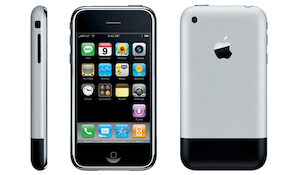 The original iPhone had a metal back that covered 80% of its area with a solid black plastic strip at the bottom that allowed the antennas to function. RF2 requires something that is not conductive in order to be transmitted or received, hence if metal covers the antennas they won’t work at all. Both the WiFi and BlueTooth shared a common copper track on a flexible circuit board at the bottom of the phone and the Cellular Antenna was a much larger and more complex copper pattern on that same piece of flexible circuit board. The WiFi and BlueTooth were separate ICs powered by a Marvell Chip and Cambridge BlueCore respectively.
The original iPhone had a metal back that covered 80% of its area with a solid black plastic strip at the bottom that allowed the antennas to function. RF2 requires something that is not conductive in order to be transmitted or received, hence if metal covers the antennas they won’t work at all. Both the WiFi and BlueTooth shared a common copper track on a flexible circuit board at the bottom of the phone and the Cellular Antenna was a much larger and more complex copper pattern on that same piece of flexible circuit board. The WiFi and BlueTooth were separate ICs powered by a Marvell Chip and Cambridge BlueCore respectively.
A chrome rim surrounded the glass screen as a bezel and the volume and mute/sleep/wake button/switches were plastic. The headphone jack was at the top and the dock connector and speaker/microphone were on the bottom. The home button was larger than all of the other buttons being on the front face, was round and plastic.
The balance of the phone always felt a little bit off: the bottom always felt ever to slightly heavier than the rest of the phone. Whilst this is not entirely a bad thing as it can help orienting the phone by feel, the plastic at the bottom was better at doing this by the feel of the material. The transition between the Aluminium back and the plastic antenna region was quite noticeable and over time with minor buckling, movement of the Aluminium became something that one tended to run their finger along subconsciously after using it for a while.
iPhone 3G/3GS
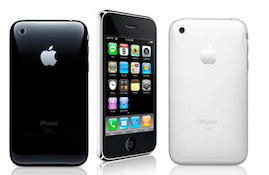
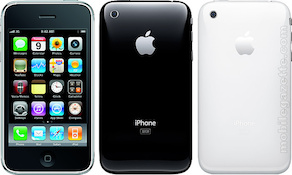 The iPhone 3 and 3GS are essentially identical in their exterior design. A single piece of convex plastic covers the phone back and sides however unlike the original iPhone the non-Home buttons are all made of metal. The 3G had the same WiFi/BlueTooth chipsets as the original however the 3GS moved to a Broadcom chip that incorporated both functionalities into the same chip. This has been the design for all iterations since. Both the 3G and 3GS have their WiFi/Bluetooth and Cellular antennas with the same design concept at the 2G - printed copper on a circuit board placed at the bottom of the phone in the same location as the 2G.
The iPhone 3 and 3GS are essentially identical in their exterior design. A single piece of convex plastic covers the phone back and sides however unlike the original iPhone the non-Home buttons are all made of metal. The 3G had the same WiFi/BlueTooth chipsets as the original however the 3GS moved to a Broadcom chip that incorporated both functionalities into the same chip. This has been the design for all iterations since. Both the 3G and 3GS have their WiFi/Bluetooth and Cellular antennas with the same design concept at the 2G - printed copper on a circuit board placed at the bottom of the phone in the same location as the 2G.
The phone physically feels more comfortable in the hand and is more symmetrical however the feel of the plastic conveys a less-expensive feel to the phone3.
iPhone 4/4S
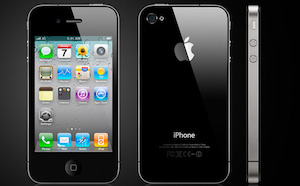
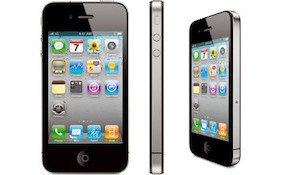 The iPhone 4 and 4S are essentially identical in their exterior design. However there is a huge difference in the antenna design between the GSM and CDMA iPhone 4 models. In a somewhat shocking design departure Apple used glass (which is RF transparent like plastic) as the back piece and moved the antennas to the outside edge of the phone made from durable stainless steel. The GSM iPhone 4 had two antennas: one for WiFi/BlueTooth/GPS and the other for Cellular. The CDMA iPhone 4 has two cellular antennas in addition to the WiFi/BlueTooth/GPS antenna by breaking the rim into three electrically separate sections. The iPhone 4S moved the moved the WiFi/BlueTooth/GPS antennas back inside the product (as per the iPhone 2G, 3G & 3GS) and used the top and bottom strips of the rim as the Diversity and Main Cellular antennas respectively.
The iPhone 4 and 4S are essentially identical in their exterior design. However there is a huge difference in the antenna design between the GSM and CDMA iPhone 4 models. In a somewhat shocking design departure Apple used glass (which is RF transparent like plastic) as the back piece and moved the antennas to the outside edge of the phone made from durable stainless steel. The GSM iPhone 4 had two antennas: one for WiFi/BlueTooth/GPS and the other for Cellular. The CDMA iPhone 4 has two cellular antennas in addition to the WiFi/BlueTooth/GPS antenna by breaking the rim into three electrically separate sections. The iPhone 4S moved the moved the WiFi/BlueTooth/GPS antennas back inside the product (as per the iPhone 2G, 3G & 3GS) and used the top and bottom strips of the rim as the Diversity and Main Cellular antennas respectively.
The larger physical size of the antennas improved signal reception however due to the signal loss when physically touched some of this advantage was lost. The “Antennagate” saga came from an issue that occurred where severe attenuation occurred when the two antennas (WiFi etc & Cellular) were bridged together. To create this problem a good connection was required and this was more predominant for those with low skin contact potential/resistance4. The issue was easily addressed by using a case or bumper around the rim of the GSM iPhone 4. It was not an issue with any of the future iPhones as Apple physically separated the antennas such that bridging in this manner was extremely difficult or even impossible using only one hand.
The glass on the front and back of the iPhone 4/4S had a very small ridge cut into it and smoothed off such that although the transition between glass and metal was noticeable it was not a defined sharp edge and felt relatively comfortable in the hand. The weight and balance of the phone was excellent as was its symmetry and it felt very solid, strong and expensive. For many people the glass back panel was also very fragile despite being significantly thicker glass than the front panel. That said, of the 4 and 4S I owned over 2-1/2 years and counting, neither has been cracked or even chipped despite most of that time being caseless.
iPhone 5/5S
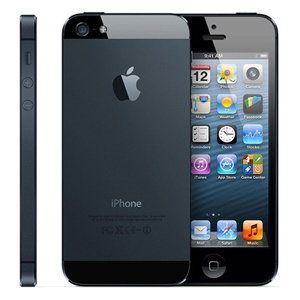
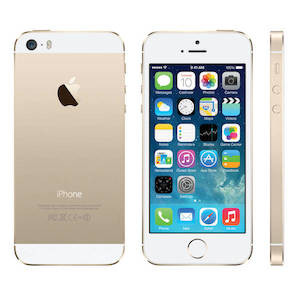 The iPhone 5 and 5S are essentially identical in their exterior design. A single metal plate covers the centre 80% of the phone back and sides however unlike the iPhone 2G design, a non-conductor (this time glass, like the 4/4S) is used evenly at both the top and the bottom to allow for WiFi/Bluetooth antennas. The band around the top of the phone and another on the bottom extends approximately 10mm toward the main metal backplate with plastic spacers separating the backplate from these two cellular antennas.
The iPhone 5 and 5S are essentially identical in their exterior design. A single metal plate covers the centre 80% of the phone back and sides however unlike the iPhone 2G design, a non-conductor (this time glass, like the 4/4S) is used evenly at both the top and the bottom to allow for WiFi/Bluetooth antennas. The band around the top of the phone and another on the bottom extends approximately 10mm toward the main metal backplate with plastic spacers separating the backplate from these two cellular antennas.
Running your finger across the cellular antenna to backplate plastic gap transition is obvious and feels a bit disjointed as per the 4/4S design. In addition on the 5S the addition of a metal ring around the home button creates a very distinct textural transition that can be a bit grating but the other way to look at it is that it helps one to find the home button. The home button itself is slightly more depressed than previous models however is itself flat as opposed to concave in all prior designs.
The lack of a full glass plate on the 5/5S has drawn Apple to include a chamfer around the outside edges of the phone. The chamfer angle on the bottom side of the phone is the same as the top but looks less shallow. This is due to the fact that the top has chamfered away more material to meet with the glass screen whereas the backplate does not need to do this. The edges feel quite prominent and almost feel uncomfortable requiring the user to reposition the phone in their hand periodically. Unlike the original iPhone 2G with rounded metal and plastic and the 3G/3GS the 4/4S and 5/5S keep their jagged edges. Where the 4/4S design seems better is that the stainless steel band is subtlely rounded off as is the glass whereas the 5/5S is precision cut to a defined edge. Those with softer hands will notice this immediately and it can be irritating. That said, the effect looks very nice visually.
iPhone 5C
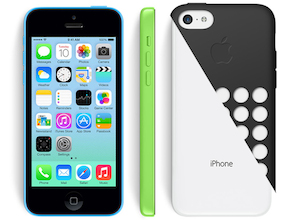 The iPhone 5c is essentially an upgraded 3G/3GS plastic case but this time with a flatter back that sits neatly on the table with a more expensive feeling plastic than previous models. That said, its still plastic and feels distinctly less expensive than the 4/4S/5/5S design. The antenna design is however essentially identical to the 4S/5/5S although this is hidden inside the plastic case. The cellular antenna also serves as additional structural support and is made from mild steel which is noticeably heavier than the 5/5s but still slightly lighter than the 4/4S. The buttons are all plastic and the colour matches that of the phone back.
The iPhone 5c is essentially an upgraded 3G/3GS plastic case but this time with a flatter back that sits neatly on the table with a more expensive feeling plastic than previous models. That said, its still plastic and feels distinctly less expensive than the 4/4S/5/5S design. The antenna design is however essentially identical to the 4S/5/5S although this is hidden inside the plastic case. The cellular antenna also serves as additional structural support and is made from mild steel which is noticeably heavier than the 5/5s but still slightly lighter than the 4/4S. The buttons are all plastic and the colour matches that of the phone back.
The Most Comfortable iPhone
The most comfortable iPhone to hold in your hand is the iPhone 2G. Its rounded edges and metal (mostly) back feel expensive, solid and comfortable in the hand. Closely followed by the 5c, with its plastic finish but excellent weighting, symmetry and solidness it feels less fragile albeit slight less expensive to hold. Beyond this the 4/4S design feels perhaps the most solid iPhone in the list however due to its fragility one feels the need to be extremely careful when handling it naked. The 5/5S design is second last to my mind as the sharp edges of the chamfer simply feel wrong and its lightness is perhaps, oddly, too light making the phone feel hollow and tending to slide around in the hand. Finally the cheap plastic back of the 3G/3GS put them as the least comfortable on the list as they don’t sit flat on a hard surface, scratch easily and feel cheap to hold.
The Future iPhone Hardware
The path Apple has chosen with its iPhone hardware design (and indeed, most of their hardware designs) has been to start with their preferred material: metal and then after several attempts with plastic and a dabble with glass it seems clear that the hybrid metal/glass approach meets the most criteria they have for product symmetry and look and feel with a cheaper option in the plastic case. In future I expect that there will always be a predominantly metal backed phone and with either a plastic or experimental material model. There has been some talk about carbon fiber as an alternative case material however given its relative infancy as a product material and lack of rigidity it is likely that it could only be used in a design such as the 5C.
So far as RF design goes the only remaining options for Cellular are to provide additional antennas however reducing their size and increasing their number seems like losing too much gain without gaining much5. The future iPhones will likely support faster WiFi and more Cellular bands but that is more an obvious next step rather than an insightful prediction. In essence, there is very little else they are likely to do.
It would be nice to see a return to the rounded edges of the original iPhone since human hands prefer smooth surfaces to defined edges (how many doorknobs have you seen with sharp edges?) however Apple sometimes place visual appeal ahead of ergonomics6 so I won’t be holding my breath there.
No matter how you feel about their hardware designs, one thing is for certain: they are visually stunning each in the own way, and have pushed the state of the art of hardware design forward for mobile devices the world over.
-
The author has owned the 2G, 3GS, 4, 4S and 5S and used all of the other models for varying lengths of time ↩︎
-
Radio Frequency signals ↩︎
-
This may be due to the reality that plastic has become a very cheap and easy of make material and its overuse in modern products has led to a belief that anything plastic is not as strong and generally ‘cheap’. Whether this reputation is deserved or not this feeling persists for many people. ↩︎
-
usually prevalent in humid, hot climates or those with wet hands due to recent washing or excessing sweating ↩︎
-
bad pun, I know ↩︎
-
puck mouse, magic mouse etc ↩︎
Celebrating 100,000 Words
![]() This post will put TechDistortion past the 100,000 words published since its inception. When I started TD on the 7th of March, 2011 and ported over 6 articles I’d written in the previous year1 I wasn’t looking to write so many.
This post will put TechDistortion past the 100,000 words published since its inception. When I started TD on the 7th of March, 2011 and ported over 6 articles I’d written in the previous year1 I wasn’t looking to write so many.
Given this is not my full time job and importantly, doesn’t need to be, it’s been a labour of love and enjoyment to get ideas out of my head in longer form articles that my readers can enjoy. I’ve appreciated all the feedback, predominantly positive, about what I’ve written about in the last 20 months. Most of all I’ve really appreciated those people that have engaged with me on Twitter, by Email and in person to further a discussion started here.
Some interesting statistics2 for you, gathered in the last 20 months of visitors to TD. 78% of TD readers are from the US, with 8% from the UK and only 5% from my home country. (Go America!)
Not surprisingly given my preferences for most things Apple, 70% of visitors were running an Apple Operating System with 27% running Windows. Given my penchant for longer articles it makes sense that 66% of the Apple readers were using a desktop browser with 16% reading on iPads with Mobile Safari. Enough of the stats.
To celebrate this milestone I’d like to announce an upcoming feature for TechDistortion. Shortly a new podcast feed will be available on iTunes for people to subscribe to an audio recording of my posts. I’m calling it the TechDistortion “Postcast.” Whilst every effort will be made to synchronise the two it can not be guaranteed but should be no longer than a few hours apart. I will be going as far back as the last 5 posted articles (including this one) for the initial feed, and will continue based on its popularity or lack thereof. It’s an experiment. Let’s see how it goes.
I’d like to personally thank each and every person who has ever read anything I’ve written: Your time is precious and I appreciate your spending some of that time ’listening’ to me. You’re the best.
Kindest personal regards,
John Chidgey
Falling Out Of Favour With The King
![]() Independent journalism is the cornerstone of every democracy they say but inevitably those in power may pick and choose who they wish to talk to and on what terms. Election results can be swayed by both good or bad media coverage and hence many journalists are pressured by their editors to support one party rather than another if that media outlet isn’t given the access they want. The symbiosis is fascinating but also dangerous as the results can affect the direction of an entire country and the lives of the individuals within.
Independent journalism is the cornerstone of every democracy they say but inevitably those in power may pick and choose who they wish to talk to and on what terms. Election results can be swayed by both good or bad media coverage and hence many journalists are pressured by their editors to support one party rather than another if that media outlet isn’t given the access they want. The symbiosis is fascinating but also dangerous as the results can affect the direction of an entire country and the lives of the individuals within.
There can be little doubt that at the moment in consumer electronics technology, Apple is the King. Their iPods, iPhones and iPads have passionate followings in massive and growing numbers turning over enormous profits and whilst Googles Android platform is larger by marketshare, the only company succeeding in the mobile space using their platform and services is Samsung and their profits and followings are not of the same scale as Apples. In the business of technology journalism or perhaps, mainstream blogging, access to the King is much sought-after. Those that upset the King are banished (see Gizmodo for the theft of the iPhone 4 prototype) whilst those still in favour are given review units, event invitations and occasionally private demonstrations. For this privilege those in favour are able to publish the articles that attract the most pageviews the soonest that ultimately drive their income.
The dilemma: What to do if you think the King is making rubbish? Do you soft-pedal it? Tone it down perhaps? Or do you tell it like you see it and risk falling out of favour? In the last few months “The Verge” has copped a lot of flack from tech pundits around the world as the once darling child of Apple was denied a review unit for both the latest iPhone and now it seems the latest iPad - something that hasn’t happened since its inception, or to follow the key players back via This is My Next and Engadget for years prior.
Reading through recent Verge articles there appears to be a growing anti-Apple sentiment or perhaps a ’tiring’ of Apple news that, when denied by staff members, the denials simply feed the belief that there is something more to it. Joshua Topolsky has recently posted his indifference to iOS 7 and their ties with Google from outside at least, appear to be growing stronger with exclusive looks at Google Glass.
We know that the 5s is still supply constrained which means review units weren’t freely available just prior to launch. With the iPad Air it seems a day after launch that it is not so constrained. Assuming there is a limited number released for technical reviews, just like in musical chairs someone was going to be left without a review unit when the music stopped, whoever that was would be unimpressed. The other theory is that on the scale of product manufacturing Apple now enjoys, the choose to restrict the quantity released for pre-launch reviews. No matter how you slice it the number of pre-launch review units was fixed and Apple decided that those entities that were unlikely to give a positive enough review or perhaps reach the audience they wanted to be reached1 would ultimately miss out. If they had more review units, maybe this would not have happened? For the 5S perhaps, but now the iPad Air as well? It seems very deliberate. It’s also interesting to note that Macworld also does not receive review units of late and for a publication heavily focussed on the Mac one has to wonder what criteria Apple use to determine pre-release eligibility.
There is much to debate about what constitutes good blogging and good journalism. In my mind the essence is to provide a balanced perspective that includes as many influencing factors as possible coupled with good investigative research. In tech blogs each device should be evaluated on its own merits without bias and if The Verge or any other blog does that - irrespective of whether it may put them at odds with King - then it’s the right move. Maintaining journalistic integrity has to come above all else otherwise readers will ultimately abandon you.
Whether you believe that The Verge have crossed a line journalistically or not, the more important question is whether it’s fair and reasonable that Apple withhold access to pre-launch devices as they have. No matter whether they are made to wait a week, both publications will publish a review once the units are on sale. The urge to release something quickly will make the review less useful and hopefully there will be a measured delay where the reviewer can get a better feel for the device before it review is published.
The more I think about this the more I have to wonder what Apple has to gain by this approach. Yes, you deny those out of favour early pageviews and hence revenue. It ends there.
You can’t prevent those publications from purchasing their own device, testing it and reviewing it however they choose once that product is released and then they will still get pageviews. Not as many, true, but that’s all. If the choice is being coerced into writing favourable reviews or not get early access then I would suggest that cost is too high and Macworld, The Verge or any other responsible publication should write what they believe to be true: the King be damned.
-
As much as it is actually possible to determine what kind of audience you’re reaching between Daring Fireball, The Loop, The Verge or Macworld. I’d suggest that it’s not actually possible to differentiate in a measurable or meaningful way. ↩︎